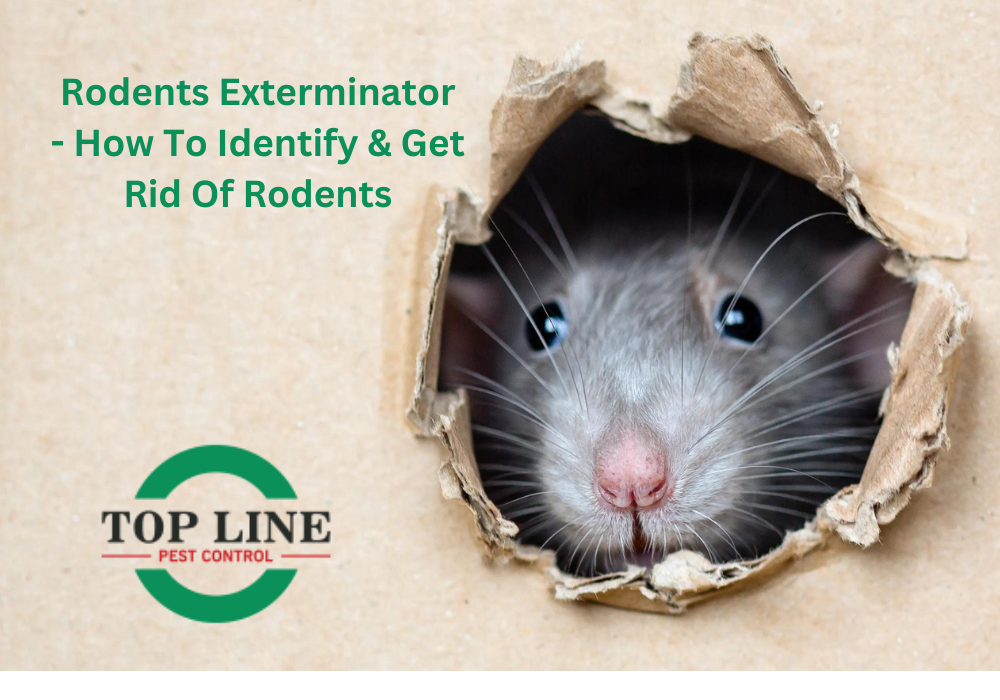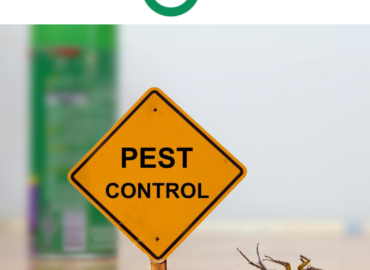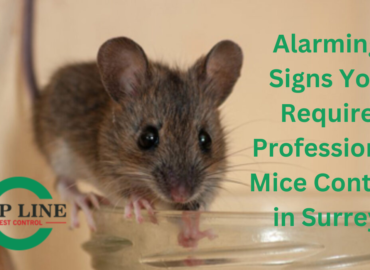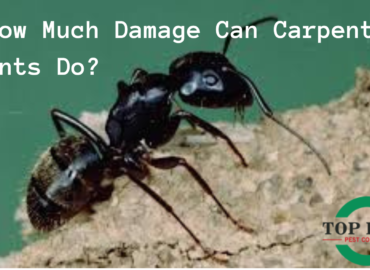Rodent infestations can cause serious damage to your property and pose health risks to you and your family. If you’re dealing with mice or rats, it’s essential to act fast.
In this guide, we’ll walk you through how to identify rodents, prevent future infestations, and take control of the situation with effective pest management strategies. If the problem persists, a professional rodents exterminator in British Columbia can help with expert solutions tailored to your needs.
How to Identify Rodents in British Columbia
Properly identifying the type of rodent in your home or business is the first step in controlling the problem. Common rodents in British Columbia include:
- Mice: Small, with large ears and long, thin tails. Mice are typically around 2-4 inches in length, excluding the tail.
- Rats: Larger than mice, with more robust bodies and shorter tails. Rats are known to cause significant damage to homes due to their strong gnawing abilities.
Signs of Rodent Infestation
If you suspect you have a rodent issue, look for these telltale signs of an infestation:
- Rodent Droppings: Small, dark, pellet-like droppings found near food sources, inside cabinets, or around nesting sites.
- Gnaw Marks: Look for evidence of chewed wires, packaging, or furniture. Rodents need to gnaw to keep their teeth from growing too long.
- Nesting Materials: Rodents use shredded paper, fabric, insulation, and other materials to build nests. Check attics, basements, or crawl spaces for these signs.
- Footprints or Tail Marks: In dusty areas or attics, you may notice footprints or tail marks left by rodents as they move around.
How to Prevent Rodents in British Columbia
Effective rodent prevention involves a combination of strategies. Follow these steps to reduce the likelihood of an infestation:
1. Seal Entry Points
Rodents can slip through the smallest gaps. Seal any cracks, holes, or gaps in your home:
- Walls, Floors, and Foundations: Use steel wool or caulk to block entry points.
- Doors and Windows: Ensure there are no gaps that rodents can sneak through.
2. Proper Food Storage
Rodents are attracted to food sources. Prevent access to food by:
- Airtight Containers: Store all food, including pet food, in airtight containers.
- Cleanliness: Wipe down countertops, sweep floors, and promptly clean up crumbs or spills.
3. Minimize Clutter
Rodents love to hide in clutter. To reduce hiding spots:
- Store Items off the Ground: Avoid storing things directly on the floor, especially in attics or basements.
- Declutter Regularly: Keep storage areas neat and organized.
4. Landscaping and Exterior Maintenance
Rodents often nest in tall grass or shrubs near your home. To reduce attractants:
- Trim Vegetation: Keep trees, bushes, and vines trimmed back from the house.
- Tidy Yard: Regularly clean your yard to remove potential rodent hiding places.
Effective Rodent Control Methods
If you are already dealing with a rodent problem, here are several ways to control and eliminate rodents from your property:
1. Rodent Traps
- Snap Traps: The most common and effective method for capturing mice and rats. Place these along walls, baseboards, and near signs of rodent activity.
- Glue Traps: Capture rodents alive, though they may not be humane. They can be effective, but there are better options for quick elimination.
- Electronic Traps: These traps deliver a swift electric shock to kill rodents instantly.
2. Rodenticides (Poison Baits)
If you’re considering using poison baits:
- Use Caution: Rodenticides can be hazardous to pets and children. Always follow the manufacturer’s instructions.
- Secured Bait Stations: Place poison baits in secured, tamper-resistant stations to limit risks to non-target animals.
3. Hire a Professional Rodent Exterminator in British Columbia
If the infestation is severe or persistent, it may be time to consult a professional rodent exterminator like Topline Pest Control. Professionals have the knowledge and tools to:
- Identify Entry Points: Experts can locate and seal entry points that you may miss.
- Develop a Comprehensive Plan: A pest control specialist will create a tailored rodent control plan to effectively eradicate the infestation.
- Ongoing Monitoring: After treatment, professionals can monitor the situation to ensure rodents don’t return.
Clean-Up and Sanitation After Rodent Infestation
Once you’ve dealt with the rodent issue, it’s crucial to clean and sanitize the area properly:
- Dispose of Dead Rodents: Wear gloves, double-bag the carcasses, and dispose of them in a sealed trash bag.
- Sanitize Affected Areas: Clean and disinfect areas where rodents have been active, especially areas with droppings or urine. Make sure to wear gloves when handling contaminated materials.
- Monitor for Signs: Continue to check for signs of rodent activity to catch any new problems early.
Prevent Future Infestations
Rodent control is an ongoing process. After eliminating the current infestation, focus on long-term prevention:
- Regular Inspections: Conduct routine inspections of your home for signs of new rodents.
- Keep Areas Clean: A clean environment is less inviting for rodents, so maintain a tidy home, especially in areas where food is stored.
- Monitor for Entry Points: Regularly check for new cracks or gaps that could allow rodents to re-enter your home.
Conclusion
Rodent control in British Columbia requires a proactive approach. By identifying the signs of an infestation early, taking preventive measures, and using the appropriate rodent control methods, you can protect your home or business from the damage rodents can cause.
If you’re unsure about how to proceed or the infestation is beyond your control, don’t hesitate to reach out to a professional rodent exterminator in British Columbia. They can help you tackle the problem effectively and ensure long-term peace of mind.
For expert rodent extermination services in British Columbia, contact [Your Company Name] today for a free consultation. Let us help you keep your home rodent-free!
FAQs
1. What are the common types of rodents in British Columbia?
The most common rodents in British Columbia include:
Mice: Small, with large ears and long, thin tails. Mice typically measure 2-4 inches long (excluding the tail).
Rats: Larger than mice, with a more robust body and shorter tails. Rats can cause significant damage due to their gnawing abilities.
2. How can I tell if I have a rodent infestation?
Signs of a rodent infestation include:
Rodent droppings: Small, dark pellets, often found near food sources or nesting areas.
Gnaw marks: Evidence of chewed wires, furniture, or food packaging.
Nesting materials: Shredded paper, fabric, or insulation used by rodents to create nests.
Footprints or tail marks: Visible in dust or less-frequented areas of your home.
3. How can I prevent rodents from entering my home?
To prevent rodents, take the following steps:
Seal Entry Points: Block cracks, gaps, and holes in walls, floors, and foundations. Use steel wool or caulk to seal small openings.
Proper food storage: Store all food, including pet food, in airtight containers and clean up spills quickly.
Remove clutter: Store items off the floor and declutter areas where rodents could hide.
Maintain your yard: Trim vegetation and keep your yard clean to eliminate potential rodent hiding places.
4. What types of traps are effective for rodent control?
There are several types of rodent traps, including:
Snap traps: Effective for both mice and rats. Place them along walls and in areas where you’ve noticed rodent activity.
Glue traps: Capture rodents alive, but they may not be the most humane option.
Electronic traps: Deliver a quick electric shock to kill rodents instantly and humanely.
5. Are rodenticides (poison baits) safe to use?
Rodenticides can be effective but come with risks, especially to children and pets. If you choose to use poison baits:
Follow the instructions carefully.
Place baits in tamper-resistant bait stations to prevent accidental exposure to non-target animals.




